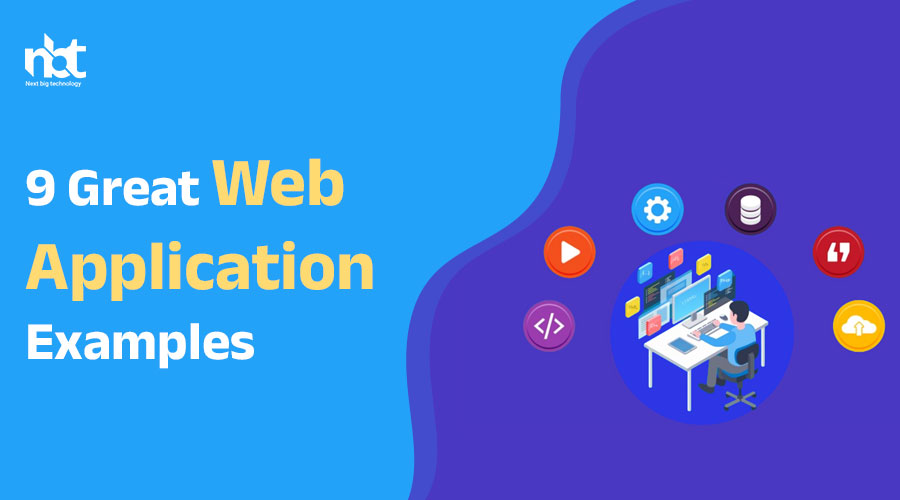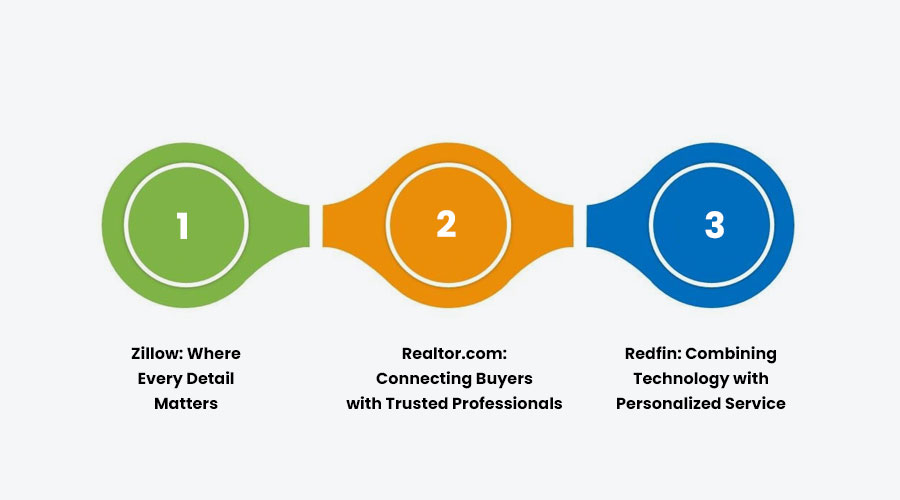E-commerce Giants: Amazon, Alibaba, and eBay Revolutionizing Online Shopping
In the dynamic world of online shopping, three names reign supreme: Amazon, Alibaba, and eBay. These e-commerce giants have not just dominated the digital marketplace but have also revolutionized the way we shop, transforming consumer behavior and redefining retail norms globally.
Amazon: Pioneering Convenience and Customer CentricityAmazon, founded by Jeff Bezos in 1994, started as an online bookstore but rapidly expanded its offerings to become the “everything store.” With a relentless focus on customer satisfaction, Amazon set the gold standard for e-commerce by introducing features like one-click shopping, Prime membership with fast shipping, and hassle-free returns.
Moreover, Amazon’s commitment to innovation has led to the development of groundbreaking technologies such as Alexa, the virtual assistant, and Amazon Go, the checkout-free convenience stores, further enhancing the shopping experience.
Alibaba: Connecting Businesses to the WorldAlibaba, launched by Jack Ma in 1999, has transformed the landscape of e-commerce by empowering small and medium-sized enterprises (SMEs) through its platforms, notably Alibaba.com and Taobao. By providing a robust online marketplace and digital infrastructure, Alibaba has enabled businesses to reach global markets efficiently and cost-effectively.
Furthermore, Alibaba’s annual shopping festival, Singles’ Day, has become the world’s largest online shopping event, showcasing the company’s unparalleled scale and influence in the e-commerce realm.
eBay: Empowering Individuals and Niche MarketseBay, established by Pierre Omidyar in 1995, introduced the concept of online auctions, allowing individuals to buy and sell a vast array of goods. By fostering a community-driven marketplace, eBay revolutionized the notion of secondhand commerce and created opportunities for niche markets to thrive.
Additionally, eBay’s commitment to user feedback and trust mechanisms has fostered a culture of transparency and reliability, enhancing the overall credibility of the platform.
The Collective Impact: Redefining Online ShoppingIndividually, Amazon, Alibaba, and eBay have reshaped the e-commerce landscape in profound ways. However, their collective impact extends beyond just facilitating transactions. These e-commerce giants have:
- Expanded Global Reach: By transcending geographical barriers, they have connected buyers and sellers from diverse corners of the world, fostering a truly global marketplace.
- Fueled Technological Innovation: Through continuous investment in technology and infrastructure, they have driven advancements in logistics, artificial intelligence, and mobile commerce, setting new benchmarks for the industry.
- Empowered Entrepreneurs: By providing accessible platforms and tools, they have empowered entrepreneurs and SMEs to thrive in the digital economy, democratizing access to markets and resources.
Collaborative Workspace Tools: Unleashing Productivity with Slack, Trello, and Asana
In today’s dynamic work environment, collaboration is key to success. With teams often spread across various locations, time zones, and even continents, the need for effective communication and project management tools has never been more critical. This is where collaborative workspace tools like Slack, Trello, and Asana come into play, revolutionizing the way teams work together and unleashing unprecedented productivity.
Slack: Streamlining Communication
Slack has become synonymous with workplace communication for good reason. Its intuitive interface and diverse features make it a powerhouse for team collaboration. With real-time messaging, file sharing, and the ability to create different channels for specific projects or topics, Slack keeps everyone connected and informed.
One of the key advantages of Slack is its integrations with other tools and platforms, allowing seamless workflow management. Whether it’s integrating with project management tools like Trello and Asana or connecting with Google Drive and Dropbox for file sharing, Slack serves as a central hub for all communication and collaboration needs.
Trello: Visualizing Workflows
Trello takes collaboration to the next level with its visual project management approach. Using boards, lists, and cards, Trello allows teams to organize tasks, assign responsibilities, and track progress in a highly visual and intuitive manner.
Each card in Trello represents a task, and team members can move these cards across different lists to reflect their current status, from “To-Do” to “In Progress” to “Completed.” This visual representation not only keeps everyone on the same page but also provides a clear overview of the project’s progress at a glance.
Moreover, Trello’s flexibility and customization options make it suitable for teams of all sizes and industries. Whether you’re managing a software development project, planning a marketing campaign, or organizing a team event, Trello adapts to your workflow with ease.
Asana: Empowering Collaboration
Asana is another powerhouse in the realm of collaborative workspace tools, focusing on task and project management. With features like task assignments, due dates, and dependencies, Asana ensures that everyone knows what they need to do and when.
One of Asana’s standout features is its ability to create project timelines and visualizations, allowing teams to see how individual tasks fit into the broader project timeline. This not only helps in planning and prioritizing work but also in identifying potential bottlenecks or delays before they occur.
Additionally, Asana offers robust reporting and analytics capabilities, providing insights into team performance, project progress, and workload distribution. These insights enable teams to optimize their processes continually and drive productivity improvements over time.
Streaming Services: Netflix, Spotify, and Disney+ Transforming Entertainment Consumption
In the digital age, the way we consume entertainment has undergone a profound transformation. Gone are the days of flipping through cable channels or purchasing physical media. Instead, we find ourselves immersed in a world where streaming services reign supreme. Among the frontrunners of this revolution are Netflix, Spotify, and Disney+, each playing a pivotal role in reshaping the landscape of entertainment consumption.
Netflix: Redefining Television Viewing
Netflix, the pioneer of subscription-based streaming, has fundamentally altered the way we watch television. With its vast library of original content, ranging from critically acclaimed series like “Stranger Things” to blockbuster films, Netflix has become synonymous with binge-watching culture. By releasing entire seasons of shows at once, it has empowered viewers to consume content at their own pace, revolutionizing the traditional television model.
Moreover, Netflix’s algorithm-driven recommendations have personalized the viewing experience, ensuring that subscribers are constantly engaged and discovering new content tailored to their preferences. This data-driven approach not only enhances user satisfaction but also provides invaluable insights for content creators, shaping the direction of future productions.
Spotify: Soundtracking Our Lives
In the realm of music, Spotify has emerged as a dominant force, offering users instant access to millions of songs at their fingertips. By leveraging cutting-edge technology and user-generated playlists, Spotify has transformed the way we discover, share, and experience music. Its algorithmic recommendations and curated playlists have become integral to how we explore new artists and genres, creating a seamless and personalized listening experience.
Furthermore, Spotify’s emphasis on accessibility, with both free and premium subscription options, has democratized music consumption, making it accessible to a global audience. Whether it’s discovering emerging artists or revisiting old favorites, Spotify has become the soundtrack to our lives, shaping our moods, memories, and moments.
Disney+: Bringing Magic to Streaming
With the launch of Disney+, the House of Mouse has made a significant foray into the streaming market, leveraging its unparalleled catalog of beloved franchises and timeless classics. From iconic animated films to blockbuster Marvel movies and Star Wars epics, Disney+ offers a treasure trove of content that appeals to audiences of all ages.
Moreover, Disney’s strategic acquisitions, including Pixar, Marvel, and Lucasfilm, have further bolstered its content library, ensuring a diverse array of entertainment options for subscribers. By combining nostalgia with innovation, Disney+ has tapped into the collective consciousness, transporting viewers to magical worlds and unforgettable adventures.
The Future of Entertainment Consumption
As Netflix, Spotify, and Disney+ continue to dominate the streaming landscape, the future of entertainment consumption looks increasingly dynamic and diverse. With the rise of original content production, data-driven recommendations, and global accessibility, streaming services are poised to shape our cultural zeitgeist for years to come.
However, with this evolution comes new challenges, including concerns about data privacy, content saturation, and the consolidation of media power. As consumers, it’s essential to critically evaluate the impact of these platforms on our lives and ensure that they uphold principles of inclusivity, diversity, and ethical responsibility.
Online Learning Platforms: Coursera, Udemy, and Khan Academy Reshaping Education
In an age where technology reigns supreme, education has undergone a profound transformation. Gone are the days of traditional classroom settings being the sole avenue for learning. Instead, a new era has dawned—one where online learning platforms like Coursera, Udemy, and Khan Academy are revolutionizing the way we acquire knowledge.
Embracing Accessibility: One of the most notable aspects of these platforms is their unwavering commitment to accessibility. Coursera, Udemy, and Khan Academy break down the barriers to education by offering a vast array of courses that cater to diverse interests and skill levels. Whether you’re a student looking to supplement your studies, a professional seeking career advancement, or simply an enthusiast eager to explore new subjects, there’s something for everyone.
Flexibility and Convenience: Another significant advantage offered by these platforms is the flexibility they afford learners. With a plethora of courses available at any given time, students have the freedom to learn at their own pace and according to their own schedule. This flexibility is particularly beneficial for individuals juggling work, family commitments, or other obligations, as it allows them to pursue education without disrupting their daily lives.
A Wealth of Learning Resources: Coursera, Udemy, and Khan Academy boast an extensive library of courses covering a wide range of topics—from computer science and business to humanities and the arts. Moreover, these platforms often collaborate with leading universities, organizations, and experts to deliver high-quality content that is both engaging and informative. Whether you’re interested in mastering a new programming language, honing your leadership skills, or delving into the mysteries of ancient history, you’ll find no shortage of resources to fuel your curiosity.
Interactive and Engaging Learning Experiences: Unlike traditional education models, which often rely on passive forms of learning, online platforms offer interactive and engaging experiences that foster active participation. Through a combination of video lectures, quizzes, assignments, and peer-to-peer interactions, students are encouraged to take an active role in their learning journey. This not only enhances comprehension and retention but also cultivates critical thinking, problem-solving, and collaboration skills essential for success in the digital age.
Bridging the Skills Gap: In today’s rapidly evolving job market, acquiring new skills and staying abreast of industry trends is paramount. Coursera, Udemy, and Khan Academy play a vital role in bridging the skills gap by providing accessible and affordable learning opportunities tailored to the needs of both individuals and organizations. Whether it’s mastering the latest software tools, acquiring in-demand certifications, or staying updated on emerging technologies, these platforms empower learners to adapt and thrive in an ever-changing landscape.
Travel and Accommodation Booking: Airbnb, Booking.com, and Expedia Redefining Hospitality
In today’s fast-paced world, the way we travel and book accommodations has undergone a remarkable transformation. Gone are the days of relying solely on traditional hotels and resorts. The advent of online platforms like Airbnb, Booking.com, and Expedia has revolutionized the hospitality industry, offering travelers unprecedented choices, flexibility, and personalized experiences.
Airbnb: A Home Away from Home Airbnb, founded in 2008, pioneered the concept of the sharing economy in travel. It allows individuals to rent out their properties – whether it’s a cozy apartment in the heart of a bustling city or a picturesque villa overlooking the sea – directly to travelers. This peer-to-peer model not only provides unique and often more affordable lodging options but also fosters a sense of community and cultural immersion.
One of the key strengths of Airbnb is its emphasis on personalized experiences. Travelers can choose accommodations that align with their specific preferences and interests, whether it’s staying in a historic neighborhood, living like a local, or enjoying amenities like a fully equipped kitchen or a private pool. Moreover, Airbnb’s user-friendly platform and review system contribute to building trust between hosts and guests, ensuring a safe and seamless booking process.
Booking.com: Your Gateway to Infinite Choices Booking.com, established in 1996, has emerged as a global leader in online travel and accommodation booking. With a vast inventory of properties ranging from luxury hotels to budget-friendly guesthouses, Booking.com caters to every type of traveler, budget, and occasion. Its intuitive search engine and extensive filter options make it easy for users to find their ideal accommodations, whether they prioritize location, price, or specific amenities.
One of Booking.com’s standout features is its commitment to transparency and convenience. Travelers can view comprehensive property descriptions, high-resolution photos, and genuine guest reviews, empowering them to make informed decisions. Additionally, Booking.com’s flexible booking policies and 24/7 customer support ensure peace of mind, especially in uncertain times.
Expedia: Unleashing the Power of Travel Technology Expedia, founded in 1996, has transformed the way travelers plan and book their trips through its innovative technology platform. As a one-stop travel shop, Expedia offers not only accommodations but also flights, car rentals, activities, and more, allowing users to seamlessly plan every aspect of their journey in one place. Its user-friendly interface and robust search functionality streamline the booking process, saving time and hassle for travelers.
What sets Expedia apart is its focus on personalized recommendations and loyalty rewards. Through advanced algorithms and data analytics, Expedia tailors its recommendations to each user’s preferences and past booking history, ensuring relevant and tailored suggestions. Moreover, Expedia Rewards program incentivizes loyalty by offering members exclusive discounts, perks, and access to VIP experiences, fostering long-term relationships with customers.
Redefining Hospitality for the Future: The rise of Airbnb, Booking.com, and Expedia has undoubtedly redefined the concept of hospitality, offering travelers unparalleled choices, flexibility, and convenience. In this new era of travel, the traditional boundaries between hotels, vacation rentals, and alternative accommodations continue to blur, giving rise to a more dynamic and interconnected ecosystem.
As these platforms continue to innovate and evolve, fueled by advancements in technology and changing consumer preferences, the future of travel and accommodation booking promises even greater possibilities. Whether it’s embracing sustainable tourism practices, leveraging artificial intelligence for personalized recommendations, or expanding into new markets, Airbnb, Booking.com, and Expedia are poised to shape the future of hospitality for generations to come.
Food Delivery Apps: Uber Eats, DoorDash, and Grubhub Simplifying Dining Experiences
In today’s fast-paced world, convenience reigns supreme. With the hustle and bustle of daily life, the thought of preparing a meal after a long day at work can often seem daunting. Fortunately, the rise of food delivery apps has revolutionized the way we dine, offering a convenient solution to our culinary cravings. Among the plethora of options available, Uber Eats, DoorDash, and Grubhub stand out as industry leaders, each offering its own unique take on simplifying the dining experience.
Uber Eats, a subsidiary of the transportation giant Uber, has quickly become a household name in the realm of food delivery. With its user-friendly interface and extensive network of partner restaurants, Uber Eats provides customers with access to a wide range of cuisines at the touch of a button. Whether you’re craving a gourmet burger, authentic sushi, or a comforting bowl of pasta, Uber Eats delivers it all straight to your doorstep, often within minutes.
Similarly, DoorDash has made a significant impact on the food delivery scene with its commitment to providing fast and reliable service. What sets DoorDash apart is its focus on accessibility, offering delivery from not only restaurants but also grocery stores and convenience stores. This versatility makes DoorDash the go-to choice for customers looking to satisfy any craving, whether it be a full-course meal or a late-night snack.
Meanwhile, Grubhub has carved out its niche by prioritizing customer satisfaction above all else. With features such as real-time order tracking and customizable delivery options, Grubhub ensures that every dining experience is tailored to the customer’s preferences. Additionally, Grubhub’s dedication to supporting local restaurants sets it apart as a champion of small businesses, allowing customers to discover hidden gems in their community while enjoying the convenience of delivery.
The success of these food delivery apps can be attributed to their seamless integration of technology and customer-centric approach. By harnessing the power of mobile apps and advanced algorithms, Uber Eats, DoorDash, and Grubhub have streamlined the ordering process, making it easier than ever for customers to enjoy their favorite meals from the comfort of their own home.
Moreover, the COVID-19 pandemic has further accelerated the adoption of food delivery services, as more people opt for contactless dining options. In response to increased demand, Uber Eats, DoorDash, and Grubhub have implemented stringent safety measures to ensure the health and well-being of both customers and delivery drivers, including contact-free delivery and enhanced sanitation protocols.
Financial Management Solutions: PayPal, Venmo, and Mint Offering Seamless Transactions
In today’s fast-paced digital world, managing finances efficiently is crucial for individuals and businesses alike. With numerous financial management solutions available, it can be overwhelming to choose the right one that suits your needs. In this article, we’ll delve into three popular platforms – PayPal, Venmo, and Mint – known for their seamless transaction capabilities and explore how they can streamline your financial management.
PayPal: A Trusted Name in Online Payments PayPal has been a household name in online payments for decades, offering a range of services tailored to both personal and business use. With its user-friendly interface and widespread acceptance, PayPal enables users to send and receive money securely across borders with ease. Whether you’re paying for goods and services online, sending money to family and friends, or receiving payments for your business, PayPal’s robust platform ensures seamless transactions every time.
One of PayPal’s standout features is its buyer and seller protection policies, providing peace of mind for both parties involved in a transaction. Additionally, PayPal offers various tools for businesses, including invoicing solutions, customizable payment buttons, and integrations with e-commerce platforms, making it a comprehensive financial management solution for entrepreneurs and enterprises alike.
Venmo: Simplifying Peer-to-Peer Payments Venmo, owned by PayPal, has gained popularity as a peer-to-peer payment platform, particularly among younger demographics. With its social feed-like interface and emoji-laden transaction descriptions, Venmo adds a fun element to the process of sending and receiving money among friends and family. Whether you’re splitting a restaurant bill, sharing rent with roommates, or contributing to a group gift, Venmo makes it easy to settle debts without the hassle of cash.
Moreover, Venmo offers a debit card linked to users’ accounts, allowing for seamless spending of their Venmo balance at eligible merchants. The platform also introduced Venmo for Business, enabling small businesses to accept payments directly through the app, further expanding its versatility as a financial management solution.
Mint: Your Personal Finance Companion Mint stands out as a comprehensive personal finance management tool, offering budgeting, bill tracking, and investment tracking features in one intuitive platform. By aggregating financial accounts from various sources, including bank accounts, credit cards, loans, and investments, Mint provides users with a holistic view of their financial health.
With Mint, users can create budgets based on their spending habits, set financial goals, and receive personalized insights and recommendations to optimize their finances. The platform also sends alerts for upcoming bills, unusual spending patterns, and potential fees, empowering users to stay on top of their financial obligations and make informed decisions.
Furthermore, Mint’s integration with TurboTax simplifies tax preparation by automatically categorizing transactions and providing tax-related insights, making tax season less daunting for users.
Real Estate Platforms: Zillow, Realtor.com, and Redfin Revolutionizing Property Searches
In the fast-paced digital era, finding the perfect property has become easier and more efficient than ever before, thanks to the advent of real estate platforms. Among the pioneers leading this revolution are Zillow, Realtor.com, and Redfin. These platforms have not only transformed the way people search for properties but have also redefined the entire real estate landscape.
Zillow: Where Every Detail Matters Zillow stands out as one of the most recognized names in the realm of real estate platforms. What sets Zillow apart is its commitment to providing users with comprehensive and detailed information about properties. From listing prices and square footage to neighborhood demographics and school ratings, Zillow offers a wealth of data to help users make informed decisions.
One of the key features that have propelled Zillow to the forefront is its Zestimate tool, which provides estimated property values based on a variety of factors. While not without its controversies, Zestimate has become a valuable resource for both buyers and sellers in gauging property worth.
Moreover, Zillow’s user-friendly interface and intuitive search filters make it easy for users to narrow down their options according to their specific preferences and requirements. Whether you’re looking for a cozy apartment in the heart of the city or a sprawling estate in the suburbs, Zillow has something for everyone.
Realtor.com: Connecting Buyers with Trusted Professionals As the official website of the National Association of Realtors, Realtor.com has established itself as a trusted authority in the real estate industry. What sets Realtor.com apart is its emphasis on connecting buyers with licensed real estate professionals who can guide them through every step of the home-buying process.
Realtor.com offers a vast database of listings, including both residential and commercial properties, ensuring that users have access to a diverse range of options. Furthermore, the platform’s collaboration with real estate agents enables users to receive personalized recommendations and expert advice tailored to their needs.
In addition to its extensive listings, Realtor.com provides valuable resources such as market trends, neighborhood insights, and mortgage calculators to help users make well-informed decisions. By prioritizing transparency and professionalism, Realtor.com has earned the trust of millions of users seeking to buy or sell property.
Redfin: Combining Technology with Personalized Service Redfin has emerged as a disruptor in the real estate market by leveraging technology to streamline the home-buying process. One of Redfin’s standout features is its proprietary algorithm, which analyzes a variety of data points to accurately predict property values and market trends.
What sets Redfin apart is its hybrid model, which combines the convenience of online searching with the expertise of local real estate agents. Users can browse listings, schedule tours, and submit offers directly through the Redfin platform, all while benefiting from the guidance of experienced professionals.
Moreover, Redfin’s dedication to customer satisfaction is evident in its commitment to transparency and fairness. Unlike traditional real estate agencies that charge hefty commissions, Redfin offers competitive pricing and rebates to buyers, ensuring that they get the most value for their money.
Top 9 Great Web Application Development Companies
In the digital era, having a robust web application is paramount for businesses aiming to thrive in the competitive online landscape. Whether it’s enhancing user experience, streamlining processes, or reaching wider audiences, web applications serve as the cornerstone of modern businesses. However, with numerous options available, selecting the right web application development company can be overwhelming. To ease your journey, we’ve meticulously curated a list of the top 9 great web application development companies renowned for their excellence in crafting innovative solutions tailored to meet diverse business needs.
-
-
Next Big Technology:

Focus Area
- Mobile App Development
- App Designing (UI/UX)
- Software Development
- Web Development
- AR & VR Development
- Big Data & BI
- Cloud Computing Services
- DevOps
- E-commerce Development
Industries Focus
- Art, Entertainment & Music
- Business Services
- Consumer Products
- Designing
- Education
- Financial & Payments
- Gaming
- Government
- Healthcare & Medical
- Hospitality
- Information Technology
- Legal & Compliance
- Manufacturing
- Media
-
- Momentum Design Lab: Specializing in user-centric design and agile development methodologies, Momentum Design Lab excels in creating intuitive and visually appealing web applications. Their focus on understanding client requirements and translating them into seamless digital experiences sets them apart in the industry.
- DockYard: Recognized for its expertise in building custom web applications using modern technologies, DockYard is synonymous with innovation and quality. From startups to Fortune 500 companies, DockYard has a proven track record of delivering tailored solutions that drive business growth.
- MobiDev: As a full-cycle software development company, MobiDev combines technical expertise with a deep understanding of market trends to deliver exceptional web applications. Their commitment to transparency, agility, and continuous improvement ensures timely delivery of feature-rich applications.
- ELEKS: With over 30 years of experience in software engineering, ELEKS stands out for its ability to leverage emerging technologies to build future-ready web applications. Their multidisciplinary teams collaborate seamlessly to deliver solutions that exceed client expectations.
- Altoros: Known for its proficiency in cloud-native development and DevOps practices, Altoros empowers businesses with scalable and resilient web applications. Their focus on automation and continuous integration ensures rapid deployment without compromising on quality.
- Netguru: Renowned for its flexible engagement models and a diverse portfolio of successful projects, Netguru is a trusted partner for companies seeking to embark on their digital transformation journey. Their agile approach and emphasis on collaboration foster innovation and drive business outcomes.
- Iflexion: With a strong focus on technology innovation and process excellence, Iflexion delivers bespoke web applications that address complex business challenges. Their comprehensive suite of services, coupled with a customer-centric approach, ensures end-to-end support throughout the development lifecycle.
- Cleveroad: Specializing in scalable and secure web application development, Cleveroad leverages its expertise in emerging technologies to deliver solutions that drive business agility and efficiency. Their commitment to quality and continuous improvement makes them a preferred choice for businesses across diverse industries.
FAQs On 9 Great Web Application Development
In today’s digital age, web application development has become a cornerstone for businesses aiming to establish a robust online presence. With the rapid advancement of technology, there’s a plethora of frameworks, tools, and methodologies available, making it both exciting and overwhelming for developers and businesses alike. To navigate through this maze, we’ve compiled a list of FAQs on 9 great web application development, unraveling the mysteries and shedding light on the essentials.
- What is web application development? Web application development involves the creation of software applications that run on remote servers and are delivered to users over the internet. Unlike traditional desktop applications, web apps can be accessed through web browsers, offering greater flexibility and accessibility.
- What are the key components of web application development? Web application development encompasses various components, including front-end development (client-side), back-end development (server-side), databases, APIs (Application Programming Interfaces), and security measures.
- Which programming languages are commonly used in web application development? Popular programming languages for web development include JavaScript, Python, Ruby, PHP, and Java. Each language has its strengths and is often chosen based on project requirements and developer preference.
- What are the advantages of using frameworks in web development? Frameworks provide developers with pre-built modules, libraries, and tools to streamline the development process. They promote code reusability, maintainability, and scalability, ultimately accelerating time-to-market for web applications.
- What are some popular front-end frameworks for web development? Front-end frameworks such as React.js, AngularJS, and Vue.js are widely used for building interactive user interfaces and single-page applications. These frameworks offer extensive documentation, vibrant communities, and robust ecosystem support.
- Which technologies are essential for back-end development? Back-end development often relies on technologies like Node.js, Django, Flask, Ruby on Rails, and ASP.NET. These frameworks provide server-side logic, database interactions, and business logic implementation for web applications.
- How do you ensure the security of web applications? Security is paramount in web application development. Best practices include implementing SSL/TLS encryption, input validation, user authentication, authorization mechanisms, and regular security audits to mitigate vulnerabilities and protect against cyber threats.
- What role does testing play in web application development? Testing ensures the functionality, performance, and reliability of web applications. Developers utilize various testing methodologies, including unit testing, integration testing, and end-to-end testing, to identify and rectify bugs and optimize application performance.
- How can I deploy and maintain web applications effectively? Effective deployment and maintenance involve choosing the right hosting provider, implementing continuous integration/continuous deployment (CI/CD) pipelines, monitoring application performance, and applying timely updates and patches to ensure seamless operation and scalability.
Thanks for reading our post “9 Great Web Application Examples”. Please connect with us to learn more about Best Web Application.






















